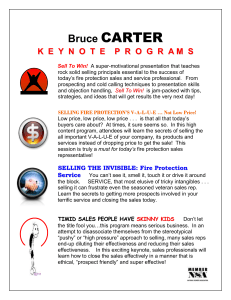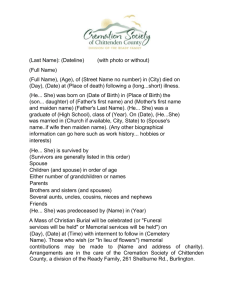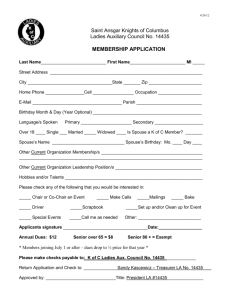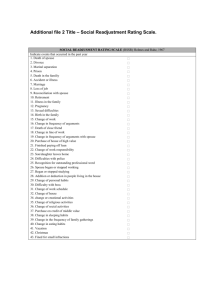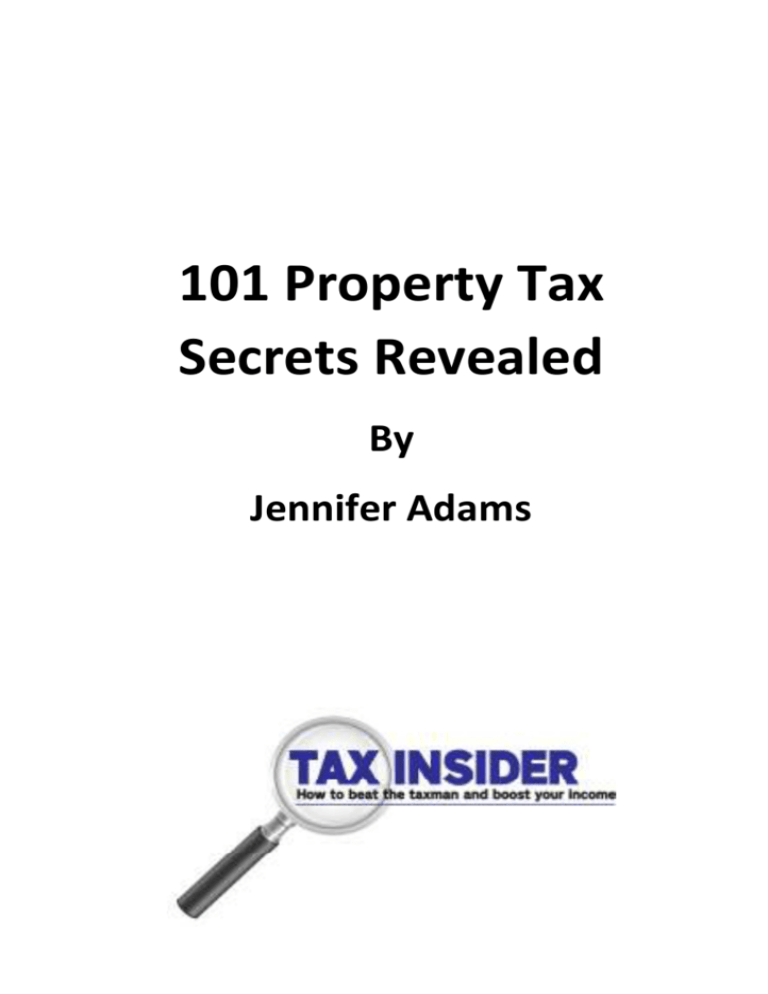
101 Property Tax
Secrets Revealed
By
Jennifer Adams
This is an excerpt from Tax Insider’s guide 101 Property Tax
Secrets Revealed 2012/13.
To get more tax-saving tips for landlords and property
investors, click here.
Publisher Details
This guide is published by Tax Insider Ltd, 3 Sanderson Close, Great Sankey, Warrington WA5
3LN.
‘101 Property Tax Secrets Revealed’ first published in November 2012.
Copyright
The right of Tax Insider Ltd and Jennifer Adams to be identified as the authors of this guide
has been asserted in accordance with the Copyright, Designs and Patents Act 1988, England.
© 2012 Tax Insider Ltd and Jennifer Adams.
All rights reserved
All rights reserved. No part of this guide may be reproduced or transmitted in any form or by
any means, electronically or mechanically, including photocopying, recording or any
information storage or retrieval system, without prior permission in writing from the
publisher.
Trademarks
Tax Insider Ltd and other Tax Insider Ltd services/ products referenced in this guide are
registered trademarks or trademarks of Tax Insider Ltd in the UK and/or other countries.
Disclaimer
1. This guide is produced for general guidance only, and professional advice should be
sought before any decision is made. Individual circumstances can vary and therefore no
responsibility can be accepted by Tax Insider, the co-author Jennifer Adams, or the publisher
Tax Insider Ltd for any action taken or any decision made to refrain from action by any
readers of this guide.
2. Tax rules and legislation are constantly changing and therefore the information printed
in this guide is correct at the time of writing — November 2012.
3. Neither the authors nor Tax Insider Ltd offer financial, legal or investment advice. If you
require such advice then we urge you to seek the opinion of an appropriate professional in
the relevant field. We care about your success and therefore encourage you to take
appropriate advice before you put any of your financial or other resources at risk. Don’t
forget, investment values can decrease as well as increase.
4. The content of this guide is for information only and all examples and numbers are for
illustration. Professional advice should always be sought before undertaking any tax planning
of any sort as individual circumstances vary and other considerations may have to be taken
into account before acting.
5. To the fullest extent permitted by law Tax Insider Ltd and Jennifer Adams do not accept
liability for any direct, indirect, special, consequential or other losses or damages of
whatsoever kind arising from using this guide.
The guide itself is provided ‘as is’ without express or implied warranty.
Contents
Contents
About This Guide
xi
Chapter 1. Business Structure
1.
Sole Trader
2
2.
Partnership
3
3.
Limited Liability Partnerships
5
4.
Profit Allocation
6
5.
Company
8
6.
Dealer Or Investor?
9
7.
Record Keeping
10
Chapter 2. Property Ownership
8.
Ownership
12
9.
Joint Spouse Ownership (1)
13
10.
Joint Spouse Ownership (2)
15
11.
Joint Non - Spouse Ownership
16
12.
Agreements On Transfer
17
Chapter 3. Finance And Investment
13.
Allowable Interest
20
14.
Equity Release
21
15.
Portfolio Mortgages
22
16.
Personal Loans
23
17.
Cash Then Mortgage
24
www.taxinsider.co.uk
Contents
18.
Property Income – Accruals Basis
25
Chapter 4. Income Expenses
19.
Revenue v Capital Expenditure
28
20.
‘Duality of Purpose’
29
21.
Foreign Travel Expenses
30
22.
Car Expenses
31
23.
Legal Fees
32
24.
‘Wear And Tear’ Allowance
33
25.
‘Renewals’ Basis
34
26.
Tenant Repairing
35
27.
Pre-Letting Expenses
36
28.
Pre-Letting Repairs
37
29.
Post-Letting Expenses
38
30.
Pre-Sale Expenses
39
31.
Property Let ‘Rent Free’
40
32.
‘Rent-A-Room’ Relief (1) - Calculation
41
33.
‘Rent-A-Room’ Relief (2) – Choice Of Method Of
Calculation
42
34.
‘Rent-a-Room’ Relief (3) – Rules
43
35.
Furnished Holiday Lettings
44
Chapter 5. Capital Allowances
vi
36.
Annual Investment Allowance
46
37.
Landlord’s Energy Savings Allowance
47
38.
Writing Down Allowance (1) – Sale Of ‘Pool’ Assets
48
www.taxinsider.co.uk
Contents
39.
Writing Down Allowance (2) – Excess Expenditure
49
40.
Restricted Claim
50
41.
Claim WDA In Preference To AIA
51
42.
‘Special Rate’ Allowance
52
43.
Vehicles
54
44.
Business Premises Renovation Allowance
55
45.
FOTS Allowance
57
46.
Ancillary Costs
58
47.
Sale Of Commercial Property – s198 Claim
59
Chapter 6. Using Losses
48.
Losses
62
49.
Losses Carried Forward
63
50.
Offsetting Losses
64
51.
Dormant Periods
65
52.
Cessation Of Business
66
53.
Capital – Negligible Value
67
54.
Capital – Negligible Value – Spouses
69
Chapter 7. Foreign Matters
55.
Non-Resident Landlord Scheme – Tax Planning
72
56.
NRLS – Agents
74
57.
NRLS – Repayments – Agents
75
58.
NRLS – Repayments – Tenants
77
Chapter 8. Selling Your Property
www.taxinsider.co.uk
vii
Contents
59.
Capital Gains Tax
80
60.
Consideration – ‘Arm’s Length’ Rule
81
61.
Valuing Land
82
62.
PPR Relief – Conditions
83
63.
Definition Of ‘Residence’
84
64.
Choosing Your PPR – ‘Flipping’
85
65.
‘Trigger’ Events
86
66.
Delay In Occupation
88
67.
Deemed Occupation
89
68.
Proving PPR Status (1)
91
69.
Proving PPR Status (2)
92
70.
Proving PPR Status (3)
94
71.
Conversion Of Property
95
72.
PPR And Dependent Relative Relief
96
73.
Job-Related Accommodation
98
74.
Selling Sequence
99
75.
Lodgers
100
76.
Working From Home
101
77.
Lettings Relief
102
78.
Entrepreneurs’ Relief
104
Chapter 9. Gifting Your Property
viii
79.
Capital Gains Tax
106
80.
Exchange Of Interests
107
81.
Exchange Of Interests – Main Residence Problem
109
www.taxinsider.co.uk
Contents
82.
‘Hold-Over’ Relief
110
83.
Gifting To Charity
111
Chapter 10. Minimising Inheritance Tax And The Use Of Trusts
84.
Lifetime Planning - Any Property
114
85.
Gift With Reservation Of Benefit
115
86.
Pre-Owned Asset Tax
116
87.
Lifetime Planning – Selling the Main Residence
118
88.
Lifetime Planning - Gifting The Main Residence
119
89.
Lifetime Planning - Retaining The Main Residence
120
90.
IHT Planning - Use Of Trusts
121
91.
‘Nil Rate Band’ Trust
122
92.
‘Charge’ Trust
123
93.
‘Interest In Possession’ Trust
124
94.
Sales After Death
125
95.
CGT ‘Hold-Over’ Relief and Trusts
126
96.
CGT ‘Hold-Over’ Relief, Trusts And PPR Problem
127
97.
Furnished Holiday Lets – Business Property Relief
128
Chapter 11. Minimising Stamp Duty Land Tax
98.
Multiple Dwellings Relief
130
99.
Gifting Property
131
100. Transfer Of Connected Property
132
101. Tax Evasion v Tax Avoidance
133
Finally – Property ‘Toolkit’
134
www.taxinsider.co.uk
ix
About This Guide
About This Guide
Anyone owning a property will, at some time or other, find
themselves subject to tax on that property. If the property is
rented out income tax may be payable, on sale possibly capital
gains tax and/or stamp duty land tax charged, whilst on death
inheritance tax may be levied.
However, there is much that can be done to save or at least reduce
the actual amount of tax payable. This guide contains 101 tax
savings tips relating specifically to property.
The tips follow the lifecycle of the ownership of a property starting
with the different ways a property can be owned and financed, and
continuing with any tax saving possibilities whilst renting, including
how losses can be utilised effectively. There are chapters
suggesting ways of minimising the capital gains tax and stamp duty
land tax chargeable on sale, and a chapter giving tax planning tips
on inheritance tax, including the use of trusts.
It should be noted that the tips in this guide are for illustration
purposes only and are intended to demonstrate where tax savings
may be made. Any tax savings that are made will be dependent
upon the precise circumstances of the situation and the examples
are included as a guide only.
It must be stressed that professional advice should always be
sought when undertaking any form of tax planning.
www.taxinsider.co.uk
xi
Chapter 1.
Business Structure
1.
Sole Trader
2.
Partnership
3.
Limited Liability Partnerships
4.
Profit Allocation
5.
Company
6.
Dealer Or Investor?
7.
Record Keeping
www.taxinsider.co.uk
101 Property Tax Secrets Revealed
1.
Sole Trader
A ‘sole trader’ is an individual who buys properties in his own
name. The sole trader is taxed on any profits made on letting
income received and any capital gain made on sale.
Non-tax reasons for buying property as a sole trader:
•
•
You have no partner with whom to share the investment.
You wish to keep control of your investment, making your own
decisions without having to consult another.
Tax reasons for buying property as a sole trader:
•
•
If you have no other income the annual personal allowance
can be deducted from any profit made on the letting income.
The property is purchased jointly and you are a non or basic
rate taxpayer. If your partner is a ‘higher’ or ‘additional’ rate
taxpayer then their share of the profit will be taxed at the
higher rates.
Sole Trader
Joanne and Robert own a rental property 50:50. Joanne has no other
income but Robert is a 50% (‘additional’) rate taxpayer. Net rental
profit is £600 per month – £7,200 per tax year.
Joanne: No tax £7,200 x 50% = £3,600 (less than the personal
allowance of £8,105).
Robert: Tax liability of £1,800 (£3,600 @ 50%).
If Joanne owned the property as a sole trader there would be no tax
liability on the full profit (£7,200 is less than the personal allowance).
2
www.taxinsider.co.uk
101 Property Tax Secrets Revealed
2.
Partnership
A partnership exists when two or more persons let out more than
one property. The difference between owners who let out jointly
owned property and a partnership is that in a partnership there
needs to be a degree of organisation similar to that required for an
ordinary commercial business with a view to making a profit. A
partnership agreement is therefore required. The individual
partners are taxed on their share of the annual profits or gains
made – not on their drawings.
Non-tax reasons for buying as a partnership:
•
•
•
•
You wish to share the investment.
On death you wish the property to be transferred
automatically to the partner who may not be your next of kin.
You wish to share the control and running of the properties.
You are not able to fund the investment on your own.
Tax reasons for buying as a partnership:
•
You are a ‘higher’ or ‘additional’ rate taxpayer and your
partner is a basic rate or a non-taxpayer. Correct tax planning
can enable a reduction of the total tax bill.
www.taxinsider.co.uk
3
101 Property Tax Secrets Revealed
Partnership
Joanne and Robert own a portfolio of rental properties 50:50.
Joanne is a basic rate taxpayer but Robert is a 50% ‘additional’ rate
taxpayer. Net rental profit is £600 per month i.e. £7,200 per year =
£3,600 each
Joanne: Tax liability of £720 (£3,600 @20%).
Robert: Tax liability of £1,800 (£3,600 @ 50%).
If Robert owned the properties as a sole trader the tax liability would
be £3,600; by owning the properties in partnership there is a tax
saving of £1,080.
4
www.taxinsider.co.uk
101 Property Tax Secrets Revealed
3.
Limited Liability Partnerships
A Limited Liability Partnership (LLP) is a corporate body with its
own legal personality.
It must be registered at Companies House and have a minimum of
two ‘members’. Each partnership member is taxable on the income
they derive from the LLP. A company can be a member of a LLP.
Non-tax reasons for buying as a LLP:
•
•
It is a legal body separate from its members.
The partners are protected from the acts of other partners,
not having joint liability as for a general partnership.
Tax reasons for buying as a LLP:
•
•
Different tax rates between partners.
Using an LLP combined with a company enables each
individual partner to be allocated a sufficient share of profit to
cover his drawings; the balance can then be allocated to the
company which pays tax thereon at only 20% (provided the
share is less than £300,000).
www.taxinsider.co.uk
5
101 Property Tax Secrets Revealed
4.
Profit Allocation
A property owned jointly or in partnership does not necessarily
mean that the rental profit or loss must be allocated in the same
proportion as the underlying ownership of the property.
The owners can agree a different split, the proportion referring to
profits and losses only and not to the capital received should the
property be sold.
It would be advisable for there to be an agreement quite separate
from the property purchase deed that confirms the proportion.
The agreement could accommodate any change in the owners’
circumstances on an annual basis and thus ensure that the personal
allowance and different tax rates are used to the best advantage
each year.
6
www.taxinsider.co.uk
101 Property Tax Secrets Revealed
Profit Allocation
The purchase deed of 54 Dorchester Place shows that the property
ownership is split 90:10 between John and his partner, Jane. The net
rental profit is £7,200 per year. John is a ‘higher’ rate taxpayer whilst
Jane is a student with no income other than her share of the profit.
John’s annual tax bill is £2,592 on his 90% share (£7,200 x 90% @ 40%
= £2,592); Jane has no tax to pay on her 10% share (£7,200 x 10% =
£720 – less than the personal allowance).
Joint net amount remaining after tax = £7,200 – £2,592 = £4,608.
It would be more beneficial for the 90:10 split to be in Jane’s favour as
this would mean a tax bill for John of £288 and nil for Jane.
Joint net amount remaining after tax = £7,200 – £288 = £6,912.
There would be a tax saving of £2,304.
www.taxinsider.co.uk
7
101 Property Tax Secrets Revealed
5.
Company
There are different types of company but the one most commonly
used for property tax planning is the private company limited by
shares. Shareholders are the owners of the company which is
administered by directors. Property can be owned by a limited
company which can have just one shareholder/director.
Non-tax reasons for buying as a company:
•
•
•
•
•
•
•
a limited company is a separate legal entity from the
shareholders;
profits and losses belong to the company;
the company can continue regardless of the death, resignation
or bankruptcy of the shareholders or directors;
the liability of shareholders is limited to the amount unpaid (if
any) on the shares held;
if the company fails, the shareholders are not normally
required to make good the deficit (unless personal guarantees
have been given);
suppliers may be more ready to give credit to a company than
to a sole trader or partnership;
a company may find it easier to raise finance.
Tax reasons for buying as a company:
The ‘small profits rate’ for a company is 20% on profits up to
£300,000. Although companies do not have a personal allowance, if
the net rental profits from a property business are taxed at the
higher rate tax as an individual, it would potentially be more
beneficial for the properties to be held inside a company.
8
www.taxinsider.co.uk
101 Property Tax Secrets Revealed
6.
Dealer Or Investor?
Difference
Someone buying property to let out on a long-term basis is deemed
to be an investor, whereas someone buying property to refurbish
then sell, whether resulting in a gain or not, will most likely be
deemed to be trading in properties – the main factor being
intention.
Capital/investment transaction
Unless losses are incurred on sale it is usually preferable for a
transaction to be of a capital/investment nature and for the
property to be held personally or via a partnership/joint
investment, rather than held within a company. This is because
individuals are allowed an annual exempt amount and invariably
are charged a lower rate of capital gains tax than the tax rates
charged on company profits.
Property dealing/trading transaction
If the transaction is in a property dealing/trading situation and the
property owner is a ‘higher’ or ‘additional’ rate taxpayer, it is
preferable for the property to be owned within a company because
the corporation tax rates charged will be lower than the income tax
rates charged.
Dealer Or Investor
Investment property does not qualify for Business Property Relief
(BPR) when considering inheritance tax.
Note: ‘Furnished holiday lettings’ are a business, not a property
income investment, thus a BPR claim is potentially available.
www.taxinsider.co.uk
9
101 Property Tax Secrets Revealed
7.
Record Keeping
UK-resident landlords are taxed on rental profits made wherever
the properties are situated in the world.
A record of the rental income, expenses incurred and capital items
purchased must be kept. Separate sets of records are needed if the
properties are let as furnished holiday lets.
Keep:
•
•
•
•
•
invoices, expense and capital item receipts, rental statements;
past years’ income and expenditure accounts and Tax Returns
submitted;
bank statements;
details of purchase of property – date of acquisition, purchase
price including costs; and
if the property was previously the landlord’s main residence,
details of periods when the landlord lived in the property and
of periods let – to ensure PPR and letting relief are claimed.
Record Keeping
Keep records manually, using spreadsheets, or use software packages,
for example ‘Landlords Property Manager’.
HMRC have an index of the record-keeping requirements for a
business at
www.hmrc.gov.uk/recordkeeping/index.htm
A penalty of up to £3,000 can be imposed by HMRC for failure to
maintain adequate records for self-assessment purposes.
10
www.taxinsider.co.uk
Chapter 2.
Property Ownership
8.
Ownership
9.
Joint Spouse Ownership (1)
10. Joint Spouse Ownership (2)
11. Joint Non - Spouse Ownership
12. Agreements On Transfer
www.taxinsider.co.uk
101 Property Tax Secrets Revealed
8.
Ownership
Persons who own property on their own do so in their sole name
with sole rights.
Spouses/civil partners can own property in their own names or
joint names.
The two legal ways in which property can be held jointly are:
•
•
12
Joint tenants – each has equal rights over the property; when
one dies the property is automatically transferred into the
other owner’s name.
Tenants in common – the share of each is separate, may be
unequal and may be disposed of in lifetime or on death as the
respective owner wishes.
www.taxinsider.co.uk
101 Property Tax Secrets Revealed
9.
Joint Spouse Ownership (1)
By default, rental profit from property jointly owned by
spouses/civil partners is taxed 50:50 irrespective of the underlying
respective proportion of actual ownership.
However, if it would be more income tax efficient for the split of
profit to be different, the underlying ownership also needs to be
changed to the same percentage. Plus, most importantly, a form 17
‘Declaration of beneficial interest in joint property and income’
must be filed with HMRC within 60 days of the change of
ownership (this restriction is strictly applied).
The declaration comes into effect from the date of signature and
remains in place until either the date on which the interests in the
property or income change, or the owners stop living together as a
married couple/civil partners.
www.taxinsider.co.uk
13
101 Property Tax Secrets Revealed
Joint Spouse Ownership (1)
Andrew and Anne are married and jointly own a rented property.
Andrew is a 50% ‘additional’ rate taxpayer and Anne is a 20% ‘basic’
rate taxpayer. Their accountant has calculated that it would be more
beneficial for the profit to be split 80:20 to ensure that the least
income tax is paid.
The ownership is therefore changed to 80:20 and the declaration form
17 signed, but unfortunately it was not submitted within the 60-days’
time limit.
The income tax split therefore remains at 50:50 but legally the
underlying ownership has changed to 80:20.
To take advantage of the income tax benefit a new declaration form
17 must be signed and resubmitted within a fresh 60-day time limit.
14
www.taxinsider.co.uk
101 Property Tax Secrets Revealed
10. Joint Spouse Ownership (2)
If one spouse owns rented properties in their own name but is a
‘higher’ or ‘additional’ rate taxpayer and the other spouse is not, it
would be beneficial for at least some of the rental profit to be
taxed on the spouse.
To alter the income tax percentage charged, ownership of part of
the property must be transferred into the spouse’s name.
Should the owning spouse not wish to transfer any material
percentage ownership but still wishes to reduce their tax bill, a
nominal amount of, say, 1% could be transferred.
In this instance the HMRC form 17 ‘Declaration of beneficial
interest in joint property and income’ must not be signed because
not signing will ensure that the underlying property ownership is
99:1 but the income split is 50:50.
Joint Spouse Ownership (2)
Andrew and Anne are married. Andrew owns a property yielding
£8,000 annually. Andrew is a 50% ‘additional’ rate taxpayer and Anne
a non-taxpayer.
Andrew transfers 1% of the property ownership to Anne, retaining
99%. Each will be taxed on 50% of the income. As Anne is a nontaxpayer this will produce a tax saving of £2,000.
www.taxinsider.co.uk
15



